
SPIXIANA
Scope & Guideline
Fostering Knowledge in Animal Sciences
Introduction
Aims and Scopes
- Biodiversity Assessment:
The journal emphasizes the documentation and assessment of biodiversity across various taxa, including amphibians, reptiles, fish, and invertebrates, contributing to the understanding of species distribution and ecological dynamics. - Taxonomic Research:
SPIXIANA showcases rigorous taxonomic studies that include the description of new species, revisions of existing classifications, and molecular phylogenetic analyses, thereby advancing the field of systematic biology. - Ecological and Behavioral Studies:
Research on the ecology and behavior of species is a core focus, with studies often exploring interactions within ecosystems, adaptations to environmental changes, and implications for conservation. - Conservation Biology:
The journal also addresses conservation issues, highlighting rare and endangered species, their habitats, and the effects of human activities on biodiversity, thus aiming to inform conservation strategies and policy. - Geographic Distribution:
Studies documenting geographic distributions of taxa contribute to understanding biogeography and the effects of climate change and habitat alteration on species ranges.
Trending and Emerging
- Molecular Phylogenetics:
There is an increasing trend toward molecular phylogenetic studies, which utilize genetic data to resolve species relationships and clarify taxonomic classifications, providing deeper insights into evolutionary processes. - Conservation Genetics:
Research focusing on the genetics of endangered species is gaining momentum, emphasizing the importance of genetic diversity for conservation efforts and the management of small populations. - Impact of Climate Change:
Studies investigating the effects of climate change on biodiversity and species distributions are on the rise, reflecting growing concerns about environmental changes and their implications for conservation. - Invasive Species Research:
There is a notable increase in research addressing invasive species and their ecological impacts, as well as studies on management practices to mitigate their effects on native biodiversity. - Ecological Interactions and Behavior:
Emerging themes include detailed studies of ecological interactions, such as predator-prey dynamics and mutualistic relationships, providing valuable insights into ecosystem functioning.
Declining or Waning
- Traditional Morphological Studies:
There is a noticeable decline in traditional morphological studies as researchers increasingly favor molecular techniques for species identification and phylogenetic analysis. - General Faunistic Surveys:
General surveys of fauna without specific ecological or conservation implications are becoming less frequent, as the journal shifts towards studies with more focused ecological insights or conservation relevance. - Studies on Common Species:
Research focusing on common or widely distributed species is diminishing, with a growing trend towards documenting rare, endemic, or threatened species, reflecting a shift in conservation priorities. - Historical Taxonomic Reviews:
While historical reviews have been a staple in taxonomy, there is a reduction in these publications as the journal emphasizes more contemporary findings and urgent conservation issues.
Similar Journals

Journal of Vertebrate Biology
Advancing knowledge in vertebrate biology.Journal of Vertebrate Biology, a reputable publication established by the Institute of Vertebrate Biology in the Czech Republic, serves as a vital platform for research across the fields of Animal Science and Zoology, Aquatic Science, and Ecology, Evolution, Behavior and Systematics. With its ISSN 2694-7684 and a commendable 2023 Q2 ranking in multiple categories, this open-access journal embraces innovative scientific inquiry and fosters academic discourse. The journal's commitment to disseminating high-quality research is reflected in its Scopus rankings, positioning it within the top quartile in several impactful areas. As it continues to converge its focus until 2024, researchers, professionals, and students alike are encouraged to engage with cutting-edge studies that advance our understanding of vertebrate biology. This publication stands out not only in its scholarly contributions but also in enhancing global awareness of biodiversity and conservation issues.
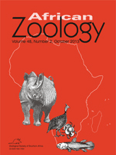
AFRICAN ZOOLOGY
Unveiling the Wonders of African WildlifeAFRICAN ZOOLOGY, published by Taylor & Francis Ltd, stands as a significant journal in the realm of Animal Science and Zoology, with a proud history dating back to 1996 and slated to continue until 2024. With an ISSN of 1562-7020 and E-ISSN 2224-073X, this journal provides a reputable platform for researchers and practitioners dedicated to the study of animal biology across the African continent. It has been recognized for its quality scholarship, evidenced by its Q3 categorization in the 2023 Scopus quartile rankings and an impressive rank of #182 out of 490 within its field. As an open-access journal, it facilitates the dissemination of vital research findings and promotes broader accessibility, catering to a diverse audience of professionals, scholars, and students alike. The journal aims to enhance our understanding of wildlife, conservation, and ecosystem dynamics in Africa, fostering collaborations that address critical ecological challenges. For researchers and enthusiasts keen on contributing to and staying informed about advancements in zoological science, AFRICAN ZOOLOGY is an essential resource that enriches the global discourse on biodiversity and conservation efforts.
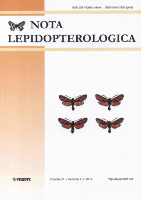
NOTA LEPIDOPTEROLOGICA
Illuminating the ecological significance of Lepidoptera.NOTA LEPIDOPTEROLOGICA, an esteemed journal published by Pensoft Publishers, has been a cornerstone in the fields of Insect Science, Animal Science, Ecology, and Evolution since its inception in 1995, with a commitment to open access publication since 2014. Based in Sofia, Bulgaria, this journal serves as a vital platform for researchers and professionals alike, facilitating the dissemination of significant findings related to Lepidoptera and broader ecological interactions. With an impressive scope covering vital aspects of biodiversity and taxonomy, NOTA LEPIDOPTEROLOGICA holds a Q3 ranking in its categories according to the 2023 metrics and plays a crucial role in advancing our understanding of insect science. By fostering international collaboration among scholars, the journal not only emphasizes the ecological importance of Lepidoptera but also contributes to global conservation efforts, making it an indispensable resource for students and experienced researchers aiming to deepen their knowledge in these fields.
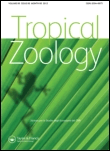
TROPICAL ZOOLOGY
Deepening our understanding of tropical ecosystems.TROPICAL ZOOLOGY is a prestigious academic journal dedicated to advancing knowledge and research in the fields of animal science, zoology, and ecology. Published by PAGEPRESS PUBL, this journal has been an integral part of the scientific community since its inception in 1988, providing a platform for the dissemination of innovative research and discoveries related to tropical wildlife and ecosystems. With an impact factor placing it in the Q3 category for both Animal Science and Zoology, as well as Ecology, Evolution, Behavior, and Systematics, it ranks among the noteworthy publications in these fields. Researchers, professionals, and students will find that TROPICAL ZOOLOGY is an essential resource for the latest findings, fostering a deeper understanding of biodiversity and conservation in tropical environments. The journal is based in the United Kingdom, with additional administrative support from MEDIGROUP in Italy, ensuring a broad international perspective and reach. While it does not operate under an open access model, it remains committed to high-quality peer-reviewed content that contributes significantly to the understanding of tropical ecosystems and the species that inhabit them.
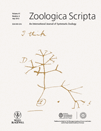
ZOOLOGICA SCRIPTA
Advancing knowledge in animal sciences and ecology.Zoologica Scripta, published by Wiley, stands as a distinguished journal within the fields of Animal Science and Zoology, Ecology, Evolution, Behavior and Systematics, Genetics, and Molecular Biology. With its inception dating back to 1971 and a convergence year extending to 2024, this journal consistently provides a platform for high-quality research, earning a Q1 ranking in two key categories and solid performance in additional fields, as evidenced by its significant Scopus rankings and impressive percentiles. Notably, it ranks 36 out of 490 journals in Animal Science and Zoology, placing it in the 92nd percentile. While Zoologica Scripta operates under a traditional access model, its rigorous peer-review process ensures that only the most impactful studies make their way into its pages. With a focus on advancing our understanding of biodiversity and evolutionary processes, this journal is indispensable for researchers, professionals, and students committed to the ongoing exploration of animal sciences and ecological studies.

Check List
Cultivating a vibrant forum for ecological discourse.Check List is a distinguished open-access journal published by PENSOFT PUBLISHERS, dedicated to advancing the fields of Animal Science, Zoology, Ecology, and Plant Science. Since its inception in 2006, the journal has provided a platform for the dissemination of significant research findings, fostering global collaboration among scientists and researchers. The journal’s impact is evident, securing a Q3 ranking in multiple environmental and biological science categories for 2023, thereby affirming its role in enriching scientific literature in these domains. With a converged publication span from 2010 to 2024, Check List maintains a commitment to accessibility and transparency in research, making important contributions to knowledge in ecology and biodiversity. By reaching a diverse readership including professionals, researchers, and students, Check List exemplifies a vibrant forum for academic discourse. The journal's base in Brazil positions it uniquely to highlight regional research while embracing a broader international perspective.
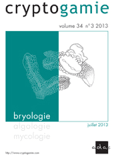
CRYPTOGAMIE BRYOLOGIE
Illuminating the Life of BryophytesCRYPTOGAMIE BRYOLOGIE is a prominent academic journal published by ADAC-CRYPTOGAMIE, focusing on the intricate field of bryology—the study of mosses and other bryophytes. Established in 1999 and continuing its commitment to scholarly excellence through to 2024, this journal serves as a vital platform for researchers, professionals, and students invested in ecosystem dynamics, plant sciences, and evolutionary biology. Recognized for its rigorous peer-review process and notable contributions, CRYPTOGAMIE BRYOLOGIE holds esteemed rankings, with a Q3 categorization in Ecology, Evolution, Behavior and Systematics and Q2 in Plant Science as of 2023. While the journal operates without open access, its articles are essential for advancing knowledge and fostering discussion in the disciplines it serves. Given its strategic position within the Scopus Ranks, where it occupies significant rankings in the domains of Plant Science and Ecology, the journal is poised to influence ongoing research and inspire future studies in the rapidly evolving world of bryophytes.
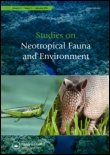
STUDIES ON NEOTROPICAL FAUNA AND ENVIRONMENT
Advancing Knowledge on Fauna and Environmental DynamicsSTUDIES ON NEOTROPICAL FAUNA AND ENVIRONMENT is a distinguished academic journal published by Taylor & Francis Ltd, dedicated to advancing the fields of Animal Science, Zoology, and Ecology. With an ISSN of 0165-0521 and an E-ISSN of 1744-5140, this journal has been a significant outlet for scholarly research since its inception in 1976, continuing to provide critical insights into neotropical biodiversity and the environmental intricacies of this rich ecological region through 2024. Recognized in the Q3 category for both Animal Science and Ecology, the journal ranks at #232/490 in Animal Science and Zoology and #402/721 in Ecology, marking it as a valuable resource for researchers, professionals, and students interested in ecological and zoological studies. By offering a platform for innovative research and comprehensive reviews, the journal aims to bridge the gap between theory and practical application, facilitating a deeper understanding of the unique challenges and conservation strategies relevant to neotropical ecosystems. Although not an open-access journal, it plays a crucial role in fostering academic discourse and knowledge dissemination in its field, ensuring that critical advancements in understanding neotropical fauna and environmental dynamics reach a diverse and engaged audience.
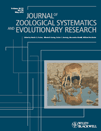
JOURNAL OF ZOOLOGICAL SYSTEMATICS AND EVOLUTIONARY RESEARCH
Exploring the Depths of Evolutionary InsightsThe Journal of Zoological Systematics and Evolutionary Research, published by Wiley-Hindawi, stands as a premier academic journal since its establishment, showcasing cutting-edge research in the fields of Animal Science, Zoology, and Ecology. With an impressive track record spanning from 1963 to the present, this journal has earned a Q1 classification in both Animal Science and Ecology, as well as recognized rankings in Genetics and Molecular Biology. Its impact is highlighted by its Scopus ranks, placing it in the top percentile for relevant categories, underscoring its vital role in advancing knowledge and understanding within these disciplines. Researchers, professionals, and students will find a wealth of high-quality, peer-reviewed articles that contribute to the evolutionary understanding of biodiversity and systematics. Though not an Open Access journal, it remains accessible to a wide audience committed to exploring the intricacies of zoology and evolutionary biology.

BELGIAN JOURNAL OF ZOOLOGY
Exploring the Wonders of Zoology Since 1990.The BELGIAN JOURNAL OF ZOOLOGY, published by the Royal Belgian Zoological Society, serves as a prominent platform for advancing research in the field of zoology. With an impact factor reflecting its status within the academic community, this journal rigorously publishes innovative studies and reviews, covering a broad spectrum of topics related to animal science and zoology. As an esteemed outlet, the journal ranks in the Q2 category for both Animal Science and Zoology, demonstrating its relevance and contribution to the field, as indicated by its Scopus ranking of 255 out of 490. Although it operates under a subscription model, the journal is committed to disseminating high-quality research that can shape contemporary understanding of animal biology and ecology. With a publication history dating back to 1990 and extending through 2024, researchers, professionals, and students are encouraged to engage with its rich content, which is vital for ongoing discourse and discovery within zoological sciences.